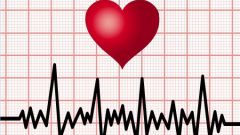Additional trabeculae have virtually no effect on hemodynamics and do not impair the well-being of the patient. Often the only manifestation of this anomaly of the connective tissue is a systolic murmur auscultation of the heart. Most doctors are inclined to consider additional trabeculae is a normal variant. However, in some cases, this anomaly could contribute to the development of arrhythmias.
In the left ventricle of the heart for more trabeculae illness is often. Such structures occur every seventh person in the world. On localization distinguish transverse, diagonal, longitudinal trabeculae of the left ventricle. If the attachment points of the cord are in the same division of the ventricle, trabeculae is considered to be transversal, if the adjacent - diagonal, with the passage of trabeculae from top to bottom is longitudinal.
Transverse trabeculae can affect the heart rhythm. Sometimes fix the syndrome of premature ventricular excitation syndrome (wolf-Parkinson-white syndrome or shortened PQ interval) associated with the presence of such anomalies. Diagonal and longitudinal trabeculae do not violate the function of the heart muscle.
Additional connective tissue strands in the right atrium are rare. The share of this anomaly is less than one-tenth of all cases of small violations of the development of the heart. Additional trabecula in the right atrium increases the risk of developing arrhythmia. This is due to a change in the movement of blood flow and irritation of the sinus node and pacemaker areas of the atrium. Violations heart rhythm, in this case presented with tachycardia and extrasystoles.
Additional trabeculae in the majority of cases are accidental diagnostic findings. Such an abnormal structure is not considered a defect of the heart, as it does not lead to failure of the myocardial function. Patients with additional trabeculae observed at the place of residence and periodically undergo instrumental examination. When the complaints perform echocardiography, daily monitoring of an electrocardiogram.
The prognosis of patients with additional trabeculae favorable in the absence of life-threatening arrhythmias.
Additional trabeculae of the left ventricle
In the left ventricle of the heart for more trabeculae illness is often. Such structures occur every seventh person in the world. On localization distinguish transverse, diagonal, longitudinal trabeculae of the left ventricle. If the attachment points of the cord are in the same division of the ventricle, trabeculae is considered to be transversal, if the adjacent - diagonal, with the passage of trabeculae from top to bottom is longitudinal.
Transverse trabeculae can affect the heart rhythm. Sometimes fix the syndrome of premature ventricular excitation syndrome (wolf-Parkinson-white syndrome or shortened PQ interval) associated with the presence of such anomalies. Diagonal and longitudinal trabeculae do not violate the function of the heart muscle.
Additional trabeculae of the right atrium of the heart
Additional connective tissue strands in the right atrium are rare. The share of this anomaly is less than one-tenth of all cases of small violations of the development of the heart. Additional trabecula in the right atrium increases the risk of developing arrhythmia. This is due to a change in the movement of blood flow and irritation of the sinus node and pacemaker areas of the atrium. Violations heart rhythm, in this case presented with tachycardia and extrasystoles.
The prognosis for additional trabecular
Additional trabeculae in the majority of cases are accidental diagnostic findings. Such an abnormal structure is not considered a defect of the heart, as it does not lead to failure of the myocardial function. Patients with additional trabeculae observed at the place of residence and periodically undergo instrumental examination. When the complaints perform echocardiography, daily monitoring of an electrocardiogram.
The prognosis of patients with additional trabeculae favorable in the absence of life-threatening arrhythmias.





